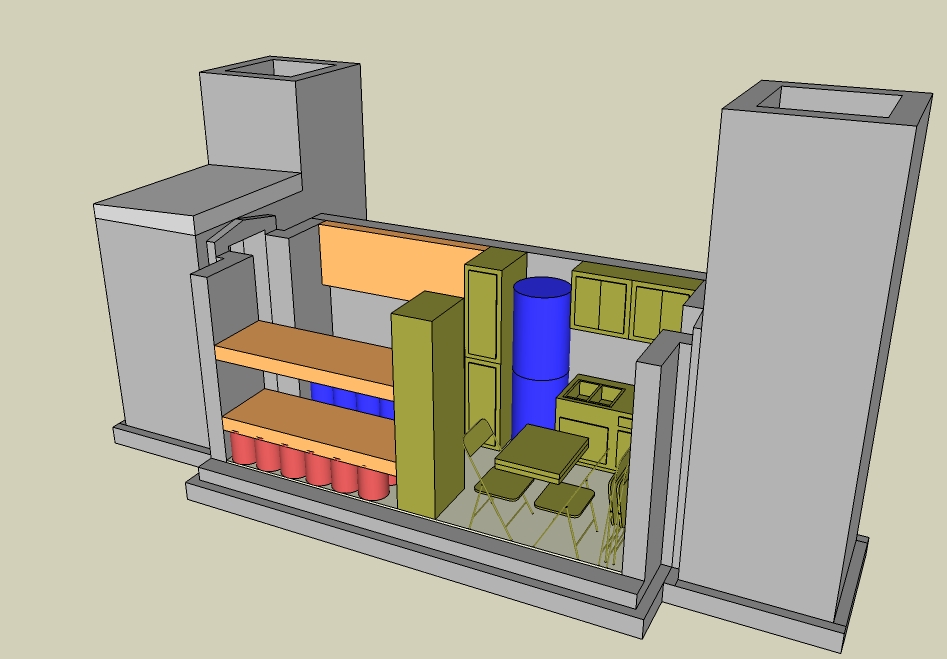
Nuclear fallout shelters have been stigmatized as the ultimate prep for the paranoid and the butt of many jokes. But now that we’ve all been reminded that nuclear accidents can happen, nobody is laughing anymore. My hope is that nuclear preparedness becomes a topic we’re more comfortable talking about again. I’d hate to see us succumb to fear mongering and instead educate ourselves, prepare for the possibility, and work toward eliminating nuclear power and weapons..
The Cold War seemed to create a general misconception – that nuclear incidents are not survivable. So most folks just gave up on the topic assuming there was nothing we could do. Even well-intentioned documentaries like Countdown to Zero tend to leave the viewer with a total sense of dread and hopelessness. The truth is those reactor accidents and blasts are survivable because radioactivity diminishes faster then we might think. After the initial incident, those that stayed sheltered would be left to rebuild, just like those who survived the bombings of Hiroshima and Nagasaki. Life would eventually return to a level of normalcy.
A misunderstanding of half-life might also be contributing to the general confusion about radiation. Reactor waste (like fuel rods) takes thousands of years to decay, but the fallout from a nuclear blast can return to safe levels (for evacuation) in as little as three to five weeks. This mix-up and Hollywood are probably the culprits for the spreading of the idea that nuclear fallout will destroy life for thousands of years – which is nonsense. This doesn’t mean we should allow the continued proliferation of nuclear reactors and weapons unless we want to eventually move underground, but while we are busy demanding the end of nukes, we should also be educating ourselves about the necessary tools and techniques for surviving nuclear accidents and blasts. , but the basics are easy to understand. So now that we’ve all been reminded that radiation from nuclear fallout is all bad, let's move onto fallout shelters.
